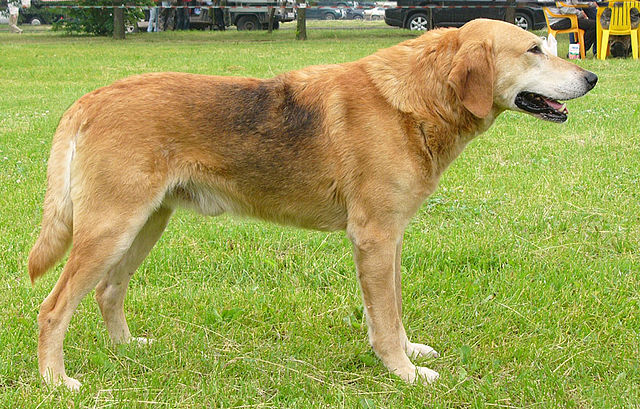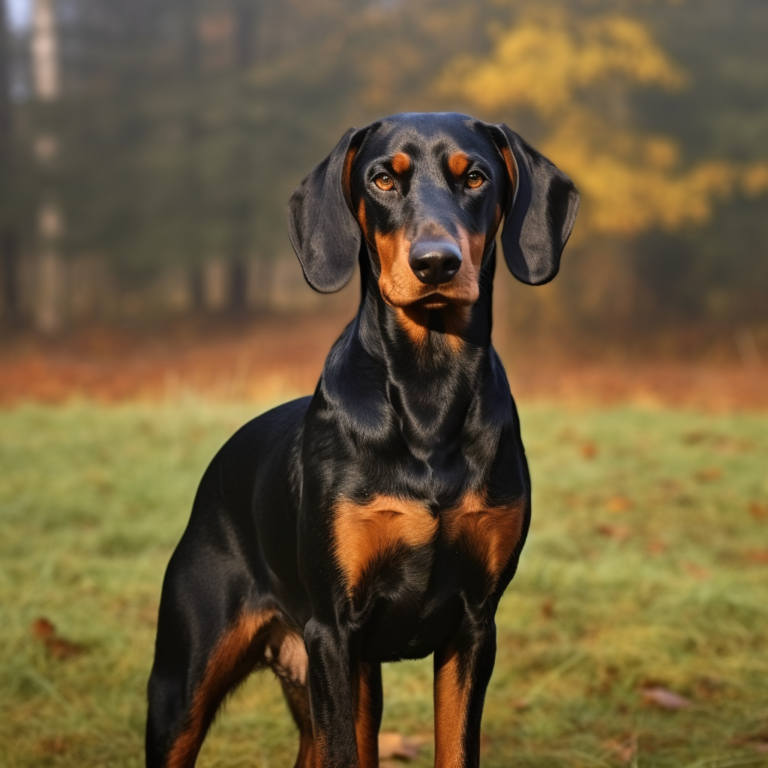The English Foxhound is an old scenthound breed that is sociable and friendly with everyone. Sweet-natured and gentle, this British breed is not generally kept as a pet. He is known more for being a hunting dog – in fact, many people are familiar with the sketches and oil paintings depicting packs of hounds pursuing foxes. But as far as being kept as a housedog or a pet… he is one of the fewest registered breeds in America. As of last year (2015), he was ranked dead last.
The English Foxhound is first and foremost a hunting dog, and has the instincts to back it up. However, being bred to work in packs with many dogs, he does not generally show aggression to members of his own species. This breed actually prefers to be around other dogs and, if raised in a pack, doesn’t necessarily need his owners to be around 24-7. This does not mean that he isn’t an affectionate dog… in fact he can be very affectionate. English Foxhounds love all people, and this includes kids. It just means that he probably won’t have separation anxiety issues if you leave him at home with your other dogs. That said, if he is the only dog in the household and he is left home alone, he might get bored and destructive.
Because he was bred to be athletic and have plenty of stamina, he does demand a lot of exercise! If he is given enough, however, he will be calm and content in the house. It is important to emphasize the word “house” here – this is definitely not an apartment dog! The English Foxhound does best in a home with a person who is very active themselves, and who enjoys playful, exuberant dogs. They also fit in well with an owners who rides horses, and who would enjoy some company during the ride!
His active nature combined with his stubborn temperament does not make him a good fit for a first-time dog owner. In fact, it is best for a would-be owner to have experience with scenthounds in general as they tend to have a very “different” attitude to life in general than the more-common breeds. One of the main scenthound features is an extremely high prey drive – the hunting instinct is so high that curbing their tendencies to chase will take an enormous amount of training. That training must be maintained throughout their lives and most English Foxhounds will need to be on-leash all the time unless safely secured in a fenced area. Also, this breed always has their nose to the ground, and they will wander right out of an unfenced yard in seconds.
One other common scenthound (and therefore English Foxhound) feature is their incredibly loud voice. This was an important trait for the hunt in that hunters needed to be able to hear their dogs as they took chase after a fox… but can be aggravating for owners and neighbors. They don’t so much bark as they “bay” and howl. Very. Very Loudly. It may be best to live further out in the country to keep from making enemies of your neighbors, if you are thinking of buying an English Foxhound. On the plus side, however, their bark may deter house invaders as their voice is a natural burglar alarm!
Finally, English Foxhounds might chase after your cat or small pets. They do best in homes with other dogs but no small animals. One must always keep in mind their prey drive. This said, the breed can be raised with cats from puppyhood and have a better chance of “doing well”, although supervision is often recommended.
This hunting breed was bred to think independently and therefore can be rather stubborn when it comes to obedience training. They can be trained, however, and if given enough incentive (through praise, motivation and food) prove to be quite biddable!
Besides their active lifestyles, care of an English Foxhound can be easy. Grooming is very simple as their short single coat only needs a quick brush down occasionally. The breed is considered exceptionally healthy and rarely needs special medical care. Also, unlike many breeds, they are amiable to living outside… as long as they have another dog (or two, or more) to live with. If they are an only dog, they should be kept inside so that the human members of the family can provide a surrogate pack.



